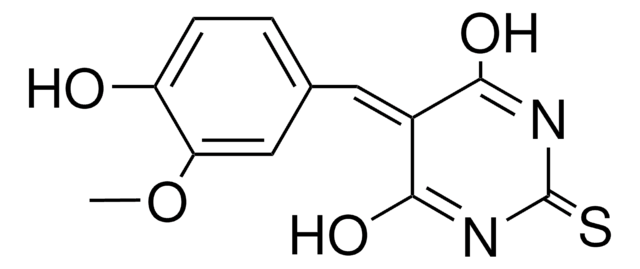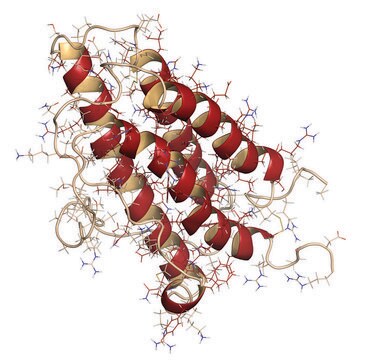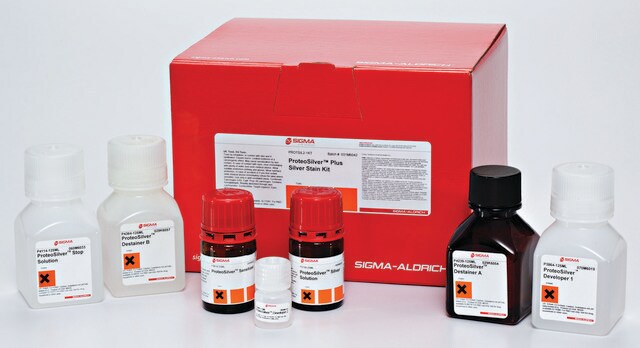PP0100
Trypsin Profile IGD Kit
Sinónimos:
In gel digestion kit, Proteomics grade Trypsin, TPCK treated
About This Item
Productos recomendados
General description
Trypsin has been chemically modified through reductive methylation of the ε-amino groups of lysine to reduce autolysis and minimize autolytic fragments. In addition, it has been TPCK (tosyl phenylalanyl chloromethyl ketone) treated to remove residual chymotrypsin activity and then further purified by affinity chromatography, yielding a highly purified trypsin suitable for proteomics work.
Application
Features and Benefits
- Faster destaining than with alternative in-gel digest kits
- Includes 100% of the reagents needed to destain, digest, and extract proteins/peptides of interest
- Compatible with Coomassie, SYPRO® Orange, SYPRO Ruby, and ProteoSilver™ Stained gels
- Resulting samples are ready for analysis by MALDI-MS or HPLC-MS
Legal Information
Solo componentes del kit
- Destaining Solution Reconstituted to 75
signalword
Danger
Hazard Classifications
Acute Tox. 4 Dermal - Acute Tox. 4 Inhalation - Acute Tox. 4 Oral - Eye Irrit. 2 - Flam. Liq. 2 - Resp. Sens. 1 - Skin Irrit. 2 - STOT SE 3
target_organs
Respiratory system
Storage Class
3 - Flammable liquids
flash_point_f
35.6 °F - closed cup
flash_point_c
2.0 °C - closed cup
Certificados de análisis (COA)
Busque Certificados de análisis (COA) introduciendo el número de lote del producto. Los números de lote se encuentran en la etiqueta del producto después de las palabras «Lot» o «Batch»
¿Ya tiene este producto?
Encuentre la documentación para los productos que ha comprado recientemente en la Biblioteca de documentos.
Los clientes también vieron
Artículos
Post-translational modifications such as glycosylation, phosphorylation, and sulfation, to name a few, serve many functions. As a result, the analysis of proteins and their post-translational modifications is particularly important for the study of diseases where multiple genes are known to be involved, such as heart disease, cancer and diabetes.
One of the most important aspects of our ultra-pure MALDI matrix substances is their ability to dissolve rapidly and completely; a brief vortex mixing is typically sufficient.
Nuestro equipo de científicos tiene experiencia en todas las áreas de investigación: Ciencias de la vida, Ciencia de los materiales, Síntesis química, Cromatografía, Analítica y muchas otras.
Póngase en contacto con el Servicio técnico

















